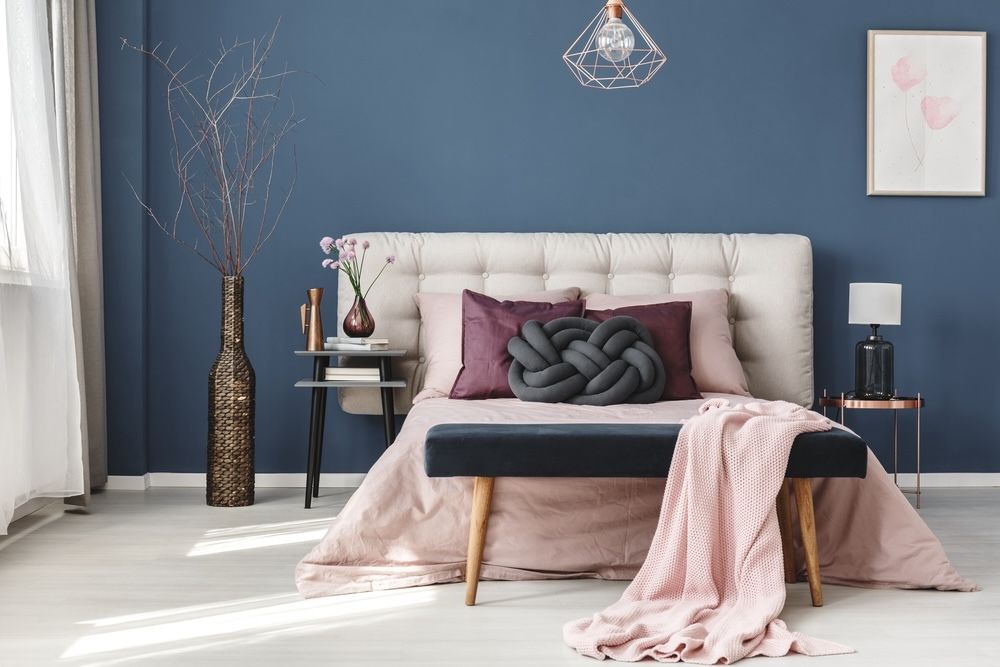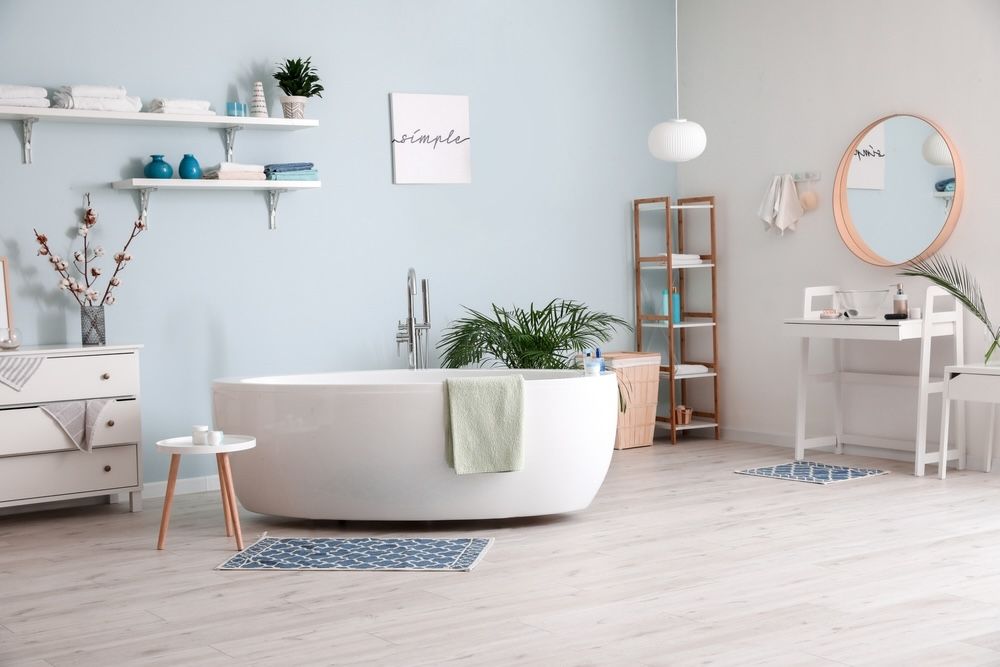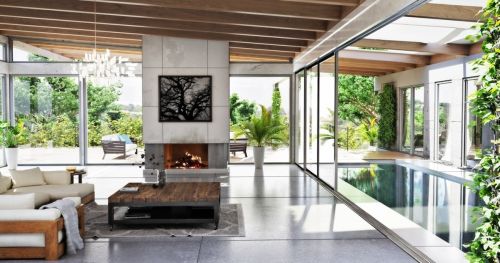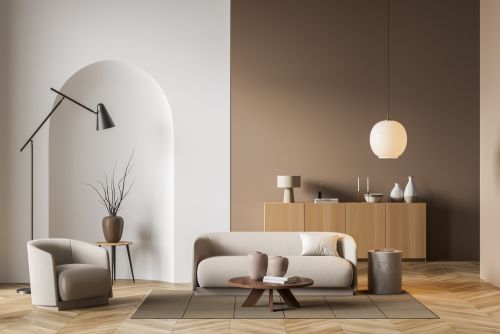The Science of Color Psychology in Home Decor: How to Choose the Right Colors for Your Space

Choosing the right colors for your home can be both an exciting and daunting task. While personal preferences often play a significant role, understanding the psychological effects of colors can help you create spaces that are not only aesthetically pleasing but also conducive to the moods and activities intended for each room. This article delves into the science of color psychology and provides practical tips for selecting the perfect hues for various areas of your home.
Color is more than just a visual experience. It can affect our moods, emotions, and even behaviors. The field of color psychology explores how different colors impact our mental and emotional states, which can significantly influence our choices in home decor. By leveraging the insights from color psychology, you can create a living environment that not only looks beautiful but also feels right for you and your family. Whether you want to create a calming bedroom, an invigorating kitchen, or a welcoming living room, understanding the psychological effects of colors can guide you in making the best decisions.
In this article, we will explore the basics of color psychology, how to apply it in different rooms of your home, and practical tips for choosing the right colors. By the end, you'll have a comprehensive understanding of how to use color to enhance the beauty and functionality of your living spaces.
The Basics of Color Psychology
Color psychology is the study of how colors affect human behavior and emotions. Different colors can evoke a range of feelings and reactions, making them powerful tools in interior design. Here’s a quick overview of some common color associations:
Red: Stimulates energy, passion, and excitement. Often used in dining rooms and kitchens to encourage social interaction and appetite.
Blue: Promotes calmness, tranquility, and stability. Ideal for bedrooms and bathrooms to create a serene and restful environment.
Yellow: Evokes happiness, warmth, and positivity. Great for kitchens and living areas to foster a cheerful and welcoming atmosphere.
Green: Represents nature, growth, and balance. Perfect for bedrooms, living rooms, and home offices to promote relaxation and concentration.
Purple: Symbolizes luxury, creativity, and sophistication. Suitable for bedrooms and creative spaces.
Neutral colors (white, beige, gray): Provide a versatile and timeless backdrop that can be accented with bolder colors. Useful in any room to create a balanced and cohesive look.
Understanding these basic color associations can help you make informed decisions about the colors you choose for your home. For example, if you want to create a calming environment in your bedroom, you might opt for shades of blue or green. On the other hand, if you want to create a lively and energetic kitchen, you might choose vibrant shades of red or yellow.
It's also important to consider how different colors interact with each other. Complementary colors, which are opposite each other on the color wheel, can create a dynamic and visually stimulating effect. Analogous colors, which are next to each other on the color wheel, can create a harmonious and cohesive look. By understanding these color relationships, you can create balanced and aesthetically pleasing color schemes for your home.
Applying Color Psychology in Different Rooms
Living Room
The living room is often the central gathering space in a home, making it important to choose colors that promote comfort and social interaction. Warm colors like shades of yellow and orange can create a cozy and inviting atmosphere. If you prefer a more calming space, consider using neutral tones with accents of green or blue.
In a living room, the color scheme can significantly influence the overall feel of the space. Warm colors such as yellows, oranges, and reds can make a room feel cozy and inviting, perfect for social gatherings and relaxation. These colors can stimulate conversation and create a lively atmosphere. On the other hand, if you prefer a more calming and serene environment, you might opt for neutral colors like beige, gray, or taupe, which can be accented with cool colors like blue or green. These colors can create a more tranquil and relaxing space, ideal for unwinding after a long day.
When choosing colors for your living room, it's also important to consider the size and layout of the space. Lighter colors can make a small room feel larger and more open, while darker colors can make a large room feel more intimate and cozy. Additionally, the amount of natural light in the room can affect how colors appear. Rooms with lots of natural light can handle bolder colors, while darker rooms might benefit from lighter, more reflective colors.

Kitchen
Kitchens benefit from vibrant and stimulating colors that can boost energy and appetite. Reds, oranges, and yellows are popular choices, but be mindful of their intensity. Using these colors as accents rather than the main palette can prevent the space from feeling overwhelming.
The kitchen is often considered the heart of the home, and the colors you choose for this space can have a significant impact on its overall feel. Vibrant colors like reds, oranges, and yellows are known to stimulate appetite and energy, making them popular choices for kitchens. However, these colors can also be quite intense, so it's important to use them thoughtfully. For example, you might choose to use these colors as accents on a backsplash, in accessories, or on a feature wall, rather than as the main color scheme.
If you prefer a more subdued and calming kitchen, you might opt for cooler colors like blues or greens. These colors can create a more relaxed and tranquil environment, which can be particularly beneficial in a space where you spend a lot of time cooking and preparing meals. Additionally, neutral colors like white, gray, or beige can provide a clean and timeless backdrop that can be accented with bolder colors as desired.
When choosing colors for your kitchen, it's also important to consider the style and overall aesthetic of the space. For example, a modern kitchen might benefit from a sleek and monochromatic color scheme, while a traditional kitchen might look best with warmer and more classic colors. Additionally, the amount of natural light in the kitchen can affect how colors appear, so be sure to test paint samples in different lighting conditions before making a final decision.

Bedroom
A bedroom should be a sanctuary for rest and relaxation. Cool colors like blue, green, and lavender are ideal for creating a peaceful environment. Soft, muted shades work best to ensure the room remains a soothing retreat.
The bedroom is a place for rest and relaxation, and the colors you choose for this space can have a significant impact on your ability to unwind and get a good night's sleep. Cool colors like blue, green, and lavender are known for their calming and soothing effects, making them ideal choices for bedrooms. These colors can create a tranquil and peaceful environment that promotes relaxation and restful sleep.
When choosing colors for your bedroom, it's important to consider the overall feel you want to create. Soft, muted shades of blue, green, and lavender can create a serene and calming environment, while deeper and more saturated shades can add a touch of drama and sophistication. Additionally, neutral colors like white, beige, or gray can provide a versatile and timeless backdrop that can be accented with your favorite colors.
It's also important to consider the size and layout of your bedroom. Lighter colors can make a small bedroom feel larger and more open, while darker colors can create a more intimate and cozy feel. Additionally, the amount of natural light in the room can affect how colors appear, so be sure to test paint samples in different lighting conditions before making a final decision.

Bathroom
Bathrooms are perfect for experimenting with cool colors that evoke cleanliness and serenity. Light blues and greens can create a spa-like atmosphere, while white or gray provides a clean and modern look. Adding small accents of bolder colors can personalize the space without disrupting its tranquility.
The bathroom is a space where cleanliness and relaxation are key, and the colors you choose can significantly influence the overall feel of the room. Cool colors like light blues and greens are known for their calming and soothing effects, making them ideal choices for bathrooms. These colors can create a spa-like atmosphere that promotes relaxation and rejuvenation.
When choosing colors for your bathroom, it's important to consider the overall style and aesthetic you want to create. Light blues and greens can create a serene and calming environment, while white or gray can provide a clean and modern look. Additionally, small accents of bolder colors can add a touch of personality and interest to the space without disrupting its tranquility.
It's also important to consider the size and layout of your bathroom. Lighter colors can make a small bathroom feel larger and more open, while darker colors can create a more intimate and cozy feel. Additionally, the amount of natural light in the room can affect how colors appear, so be sure to test paint samples in different lighting conditions before making a final decision.

Home Office
Productivity and focus are key in a home office. Greens and blues are excellent choices as they promote concentration and calmness. If you want to inspire creativity, consider adding touches of purple or yellow. Neutral backgrounds can also help to minimize distractions.
The home office is a space where productivity and focus are key, and the colors you choose can significantly influence your ability to concentrate and get work done. Greens and blues are known for their calming and soothing effects, making them ideal choices for home offices. These colors can create a tranquil and focused environment that promotes concentration and productivity.
When choosing colors for your home office, it's important to consider the overall feel you want to create. Soft, muted shades of green and blue can create a serene and calming environment, while deeper and more saturated shades can add a touch of drama and sophistication. Additionally, touches of purple or yellow can inspire creativity and add a touch of personality to the space.
It's also important to consider the size and layout of your home office. Lighter colors can make a small office feel larger and more open, while darker colors can create a more intimate and cozy feel. Additionally, the amount of natural light in the room can affect how colors appear, so be sure to test paint samples in different lighting conditions before making a final decision.

Tips for Choosing the Right Colors
Consider Lighting: Natural and artificial lighting can significantly alter the appearance of colors. Test paint samples in different lighting conditions to see how they look throughout the day. This can help you avoid choosing colors that look great in the store but not in your home.
Start Small: If you're hesitant about bold colors, start with small accents like pillows, artwork, or a single accent wall. This allows you to experiment without committing to a large-scale change. You can always add more bold colors later if you like the effect.
Use Color Wheels: A color wheel can help you understand complementary and analogous color schemes, making it easier to create a harmonious palette. This can be particularly helpful if you're not sure which colors work well together.
Balance Bold with Neutral: Pair bold colors with neutral tones to create a balanced and visually appealing space. This approach can make vibrant hues feel more sophisticated and less overwhelming. For example, if you love bright red, consider using it as an accent color against a backdrop of white or gray.
Conclusion
Understanding the principles of color psychology can transform your home into a space that not only looks beautiful but also supports your well-being. By thoughtfully selecting colors based on their psychological effects, you can create environments that enhance your daily life. Whether you're redecorating a single room or undertaking a complete home makeover, let the science of color guide your choices to achieve the perfect balance of aesthetics and functionality.
By incorporating the principles of color psychology into your home decor, you can create spaces that not only look beautiful but also support your mental and emotional well-being. From creating a calming bedroom to an energizing kitchen, the right colors can make a significant difference in how you feel in your home. By understanding the psychological effects of colors, you can make informed decisions that enhance the beauty and functionality of your living spaces. So, whether you're redecorating a single room or undertaking a complete home makeover, let the science of color guide your choices and transform your home into a haven of comfort and style.
Check more articles on our blog

How to Organize Your House with Feng Shui Rules

Incorporating Biophilic Design: Bringing Nature Indoors

Minimalist Home, Maximized Life
